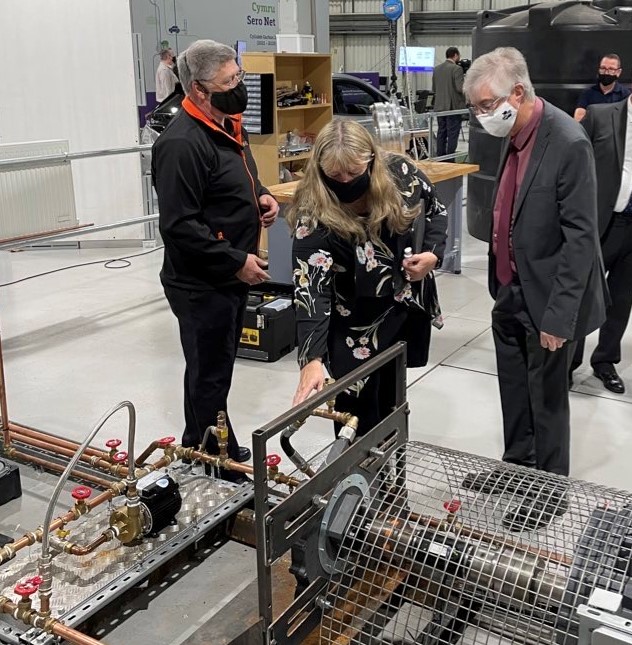Feel the heat
How long will it be before COP26’s decisions turn up the heat on how we consume energy, or fades from our memories?
On the surface, COP26 set out to deliver on four simple and coherent goals. For many, it is the first goal that is front of mind: “Secure global net zero by mid-century and keep 1.5 degrees within reach”. However, it is the fourth goal that will lead to a lasting legacy “Work together to deliver”.

At the launch of the Wales Net Zero plan, Rotaheat’s CTO, Dr Andrew Tulloch, offers caution whilst the Welsh Minister for Climate Change, Julie James, and the First Minister of Wales, Mark Drakeford, feels the heat from a Rotaheater Pico.
This last goal recognises there is no single solution. Decarbonising our energy needs requires us to address a wide range of approaches to meet a growing demand for power, transport, and heat. With limited solutions to offsetting carbon emissions, it follows logically that there will be an increasing emphasis on zero carbon solutions, rather than low carbon solutions as part of this target. As a consequence, we might then expect further declining financial support for low carbon power and low carbon transport offerings.
As we head towards winter, it is heat rather than power or transport that is getting more attention: UK government policy to discourage new boiler installations and adopt low carbon solutions reflects a perceived absence of those zero carbon alternatives; something of a fudge, perhaps temporarily forgivable, amongst reports of fuel shortages and the increasing cost of gas.
There are existing solutions to exploiting hydro sites for generating the elusive zero carbon heat. Familiar approaches rely on first generating electricity together with the associated capital costs, including directing surplus power to resistive heating banks and integrating heat pumps into a system.
Rotaheat is deploying an alternative approach to delivering zero emission heat for temperatures of up to 110°C whilst avoiding the additional costs of a grid connection and the upheaval of installing a heat pump.
Rotaheat’s technology is highly efficient at converting motive power (mechanical rotational energy including marine and hydro) directly to thermal energy in the form of heated fluids. By avoiding the inefficient generation of electricity, Rotaheat’s technology i) delivers ~20% more useful energy in the form of heat than when electricity is first produced and then converted to heat and ii) reduces capital installation costs. The argument being, if you want heat generate heat, don’t generate electricity then heat with its substantial cost, complexity and losses.
Two core products, the Rotaheater™ Pico and the Rotaheater Micro, currently enable the generation of zero emission heat with output from as little as 3kW through to over 200kW.
With the easing of travel restrictions, we intend to resume hosting Open Days at a waterwheel in Derbyshire. Please do contact us if you have an interest in receiving an invitation to feel the heat yourself.
Contact Rotaheat (info [at] rotaheat.co.uk) to learn more and understand how easy it is to warm up your hydro project.
(First published in the British Hydropower Association‘s Spotlight magazine, Autumn 2021)
